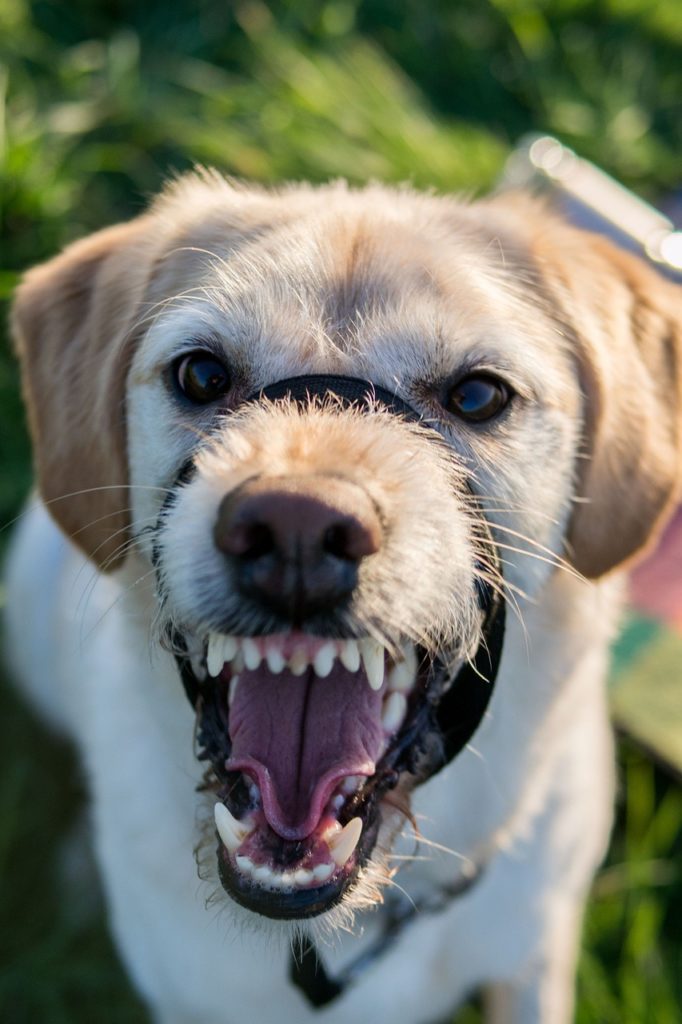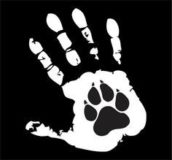Please just leave me alone!
If only I had a penny for every time someone has said that a dog was aggressive because it growled at them… I’d be a very rich man!
Unfortunately, most people believe that you should chastise a dog that is growling, so why is it that I love dogs that growl? Dogs that growl are communicating with us and it’s so important that we listen and take note.

Let us for example look at a dog that doesn’t like people. Look at the normal progression of the dog’s behaviour as a person approaches and compare that with a person that is frightened of dogs.
- As the person approaches the dog stares and becomes tense, the person oblivious to the dog’s body language continues to go towards the dog.
- The dog now lip curls, showing its teeth to try and warn the person away. Ignoring the obvious signs that the dog wants to be left alone the person sticks their hand out as a piece offering.
- The dog growls, the person stays where they are or continues to approach the dog.
- The dog then lunges and air snaps. Even with the dog displaying all these behaviours the person still tries to touch the dog.
- The dog bites!
- WHAT A BAD DOG??????
Now how do we behaviour when the tables are turned?
- As the dog approaches the person, the person tenses up. The dog being a happy chappy and really friendly tries to go up to the person.
- The person sneers at the dog and then shouts at it to make it go away. The dog still full of life and super friendly tries to get nearer the person.
- The person then steps forward and tries to shoo the dog away with their arms and feet. The dog then comes too close and the person kicks the dog!
- WHAT A BAD…..?????????
Amazing how we go through extraordinarily similar behaviours. Now imagine, being told off for the lip curl, the growl and the lunge and we are left with a dog that suddenly reacts and bites without warning!
Why because they’ve been punished for all the early warning signs that are innate within all of us. Aggression is always the last course of action that a normal animal wants to take. Biting is aggressive, everything up to that point is a desperate attempt to avoid confrontation.
We need to learn to understand our four legged friends, the subtle signs of communication (head turns, whale eye, lip licking, yawning etc.) which can easily go unnoticed or simply ignored. This results in our dog having to ask more forcefully.
Is it the fact that your child has pulled too hard on their tail? Are they in pain? Are they frightened? And just because your dog will tolerate things like being picked up when they don’t want to be or having their food taken from them, doesn’t mean they will always tolerate it. Eventually they growl or show their teeth, or snarl, or snap. Ultimately, all dogs would reach this point in certain circumstances; it’s just that the specific contexts and tolerance thresholds vary between dogs.
So now we know that a growl is a warning: a message that the dog is uncomfortable. It does not make them a ‘bad’ dog or ‘aggressive’: they’re simply telling you how they feel in a way that you will listen. But what do I do if my dog growls? Well, what would you like someone to do if they were making you uncomfortable and you asked them to back off? Simply, just stop whatever you are doing and give them some space. Then think about what signs you might have missed that your dog was unhappy, before the growl. Reflect on what instigated the behaviour so that you know what you need to work on (or simply avoid, depending on the situation) in the future. That’s why I love dogs that growl, don’t tell them off or you might not get such a good warning next time!
If in doubt and your dog has growled, get help. Its better to deal with any issues sooner rather than later.

